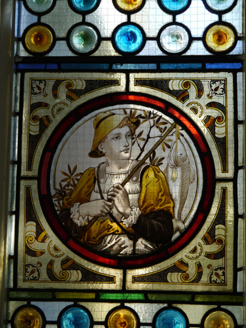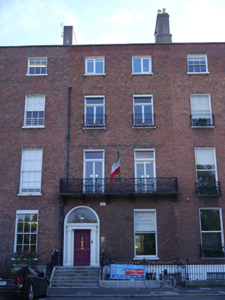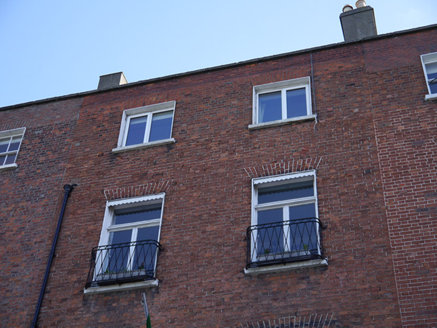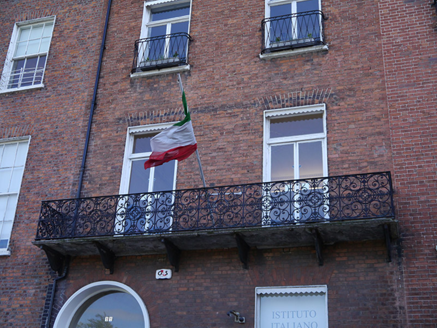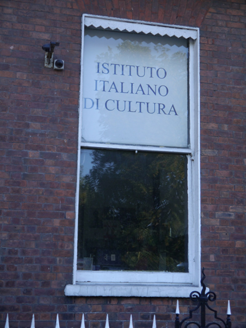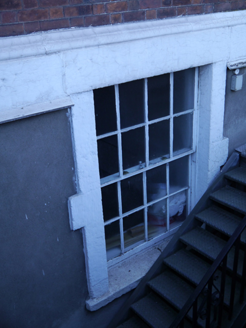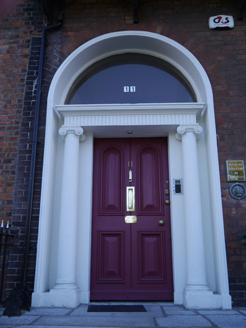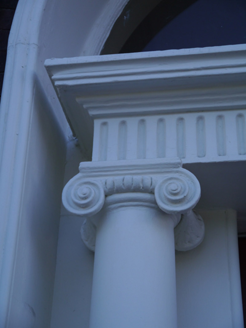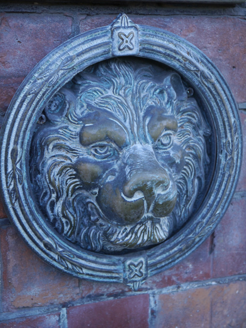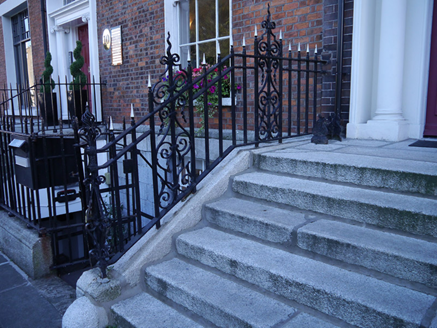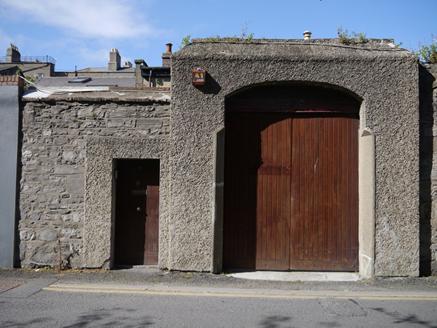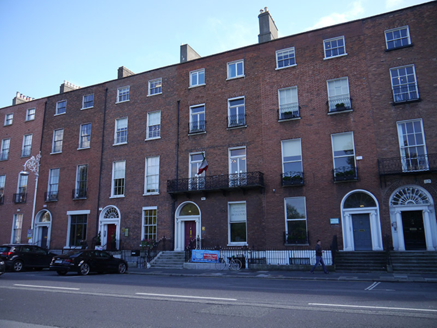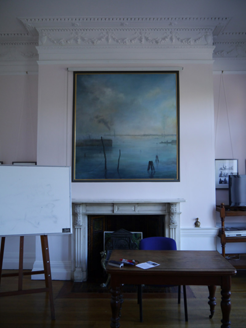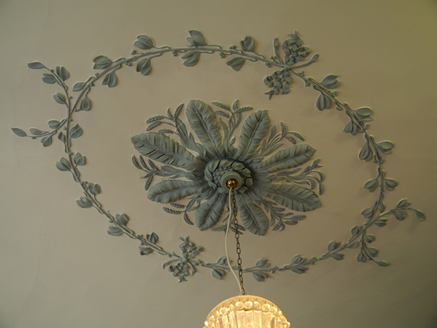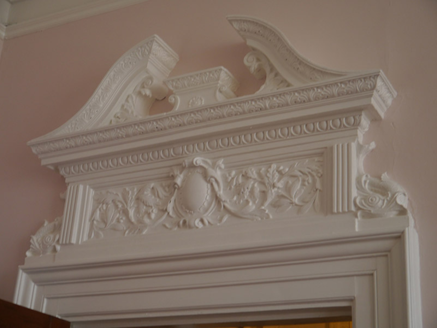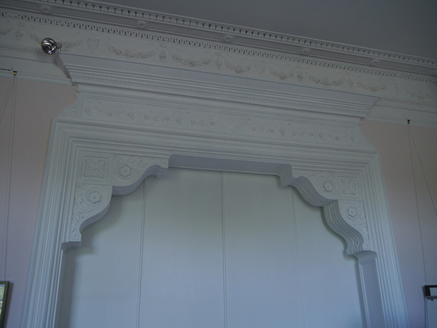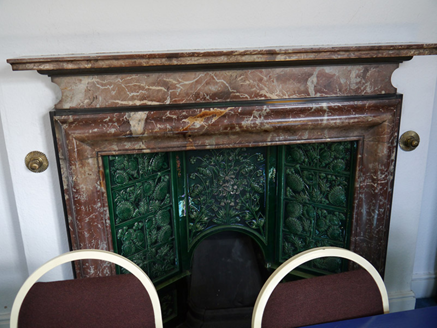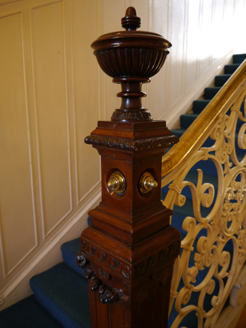Survey Data
Reg No
50930122
Rating
Regional
Categories of Special Interest
Architectural, Artistic
Original Use
House
In Use As
College
Date
1815 - 1825
Coordinates
316574, 233014
Date Recorded
24/09/2015
Date Updated
--/--/--
Description
Attached two-bay four-storey over basement former townhouse, built c. 1820, as a pair with adjoining house to south (50930123). Two-stage return to rear (east) abutted by Arts and Crafts extension, built c. 1910. Now in use as cultural institute. M-profiled slate roof with terracotta ridge tiles, concealed by refaced brick parapet with granite coping, pair of rendered chimneystacks to party walls and gable of rear return, shouldered to south with lipped yellow clay pots. Parapet gutters with cast-iron downpipe and hopper to north side. Red-brick walling laid in Flemish bond over rendered walling to basement beneath granite stringcourse. Square-headed window openings with brick voussoirs, patent reveals and masonry sills, granite surrounds to basement. Cast-iron balconettes to second floor and continuous cast-iron balconette to first floor. Largely bipartite early-twentieth century side-hung timber casement windows with overlights and toothed trim to window head, uPVC casements to third floor, one-over-one timber sliding sash to ground floor with ogee horns and eight-over-eight sash to basement (some reeded glass inserts). Round-headed door opening brick voussoirs, moulded reveals and recessed rendered surround containing a prostyle portico with fluted frieze and moulded cornice carried on Ionic columns over plinth stops, plain glass fanlight and raised-and-field timber panelled door with beaded-muntin and round-headed upper panels. Granite entrance platform with cast-iron boot scraper, approached by seven granite steps flanked by decorative iron railings on granite plinth, enclosing basement to south-side. Interior features, a number of which were added in the late-nineteenth century include; ornate plasterwork, elaborate overdoor pediments, marble fireplaces, scrolled timber and iron balustrades and stained glass side lights to rear (east) ground floor window. Coal-hole cover to pavement. Two-storey flat-roofed modernised mews building to rear plot. Dry-dash rendered elliptical-headed carriage-arch with raked coping and timber gates to boundary on Lad Lane, abutted by rubble limestone wall with square-headed door opening, recent timber door and dry-dash surrounds.
Appraisal
Mary Bryan (2006) attributes the building of Nos. 9-12 to Nathaniel Calwell. According to Casey (2005), the interior was modified during the late-nineteenth century and an Arts and Crafts billiard room was added to the rear c. 1910. The railings are Victorian replacements. Despite these alterations reflecting new tastes and requirements, No. 11 forms part of a relatively intact late-Georgian streetscape. Laid out in 1791 by the surveyors J & P Roe, Fitzwilliam Square was the last of the city’s Georgian squares to be completed. Development was staggered, progressing slowly until after the Napoleonic Wars , and the vast majority of houses were completed on the eastern side of the square between 1816-22. Although largely homogeneous in character and form, the subtle variations between terraces are indicative of the speculative nature of the Square’s development.
